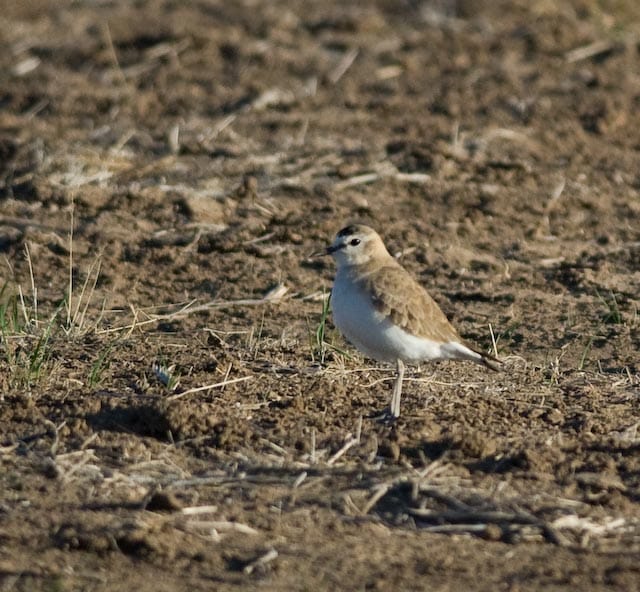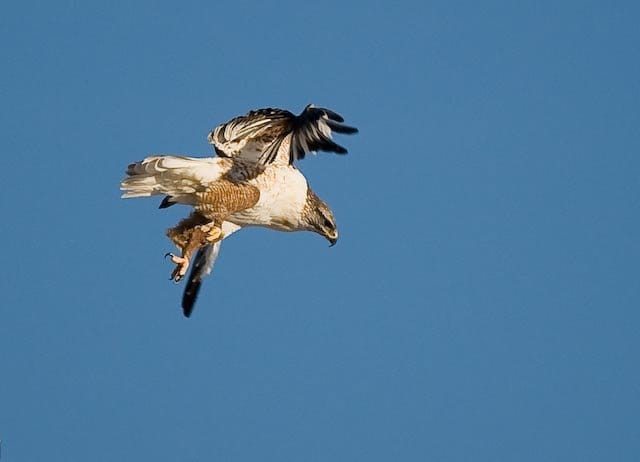Well, maybe not forgotten, but certainly over-looked. Outside of hardcore twitchers looking for specialty birds and after speaking to thousands and thousands of birders, I have concluded that most people really do not put much emphasis on our prairies. Perhaps, this is because we, as Americans, have destroyed nearly every morsel of prairie we have left. I can certainly speak about the Midwest where states like Wisconsin, Iowa, Minnesota, etc. have over-developed these areas for agricultural uses. Nevertheless, the one question will remain as to why we toss this habitat aside as if we all collectively made a decision to pick one habitat and dismiss it.
Our North American Prairies hold 2/3 of their biomass beneath the soil. Imagine if a Red Maple forest of the east or Ponderosa Pine woodlands of the west exhibited the same attributes. Those forests would look more like savannas than full-grown woodlands. While we continue to decimate our short and tall grass prairies many species reach their inevitable peril. You may say this is cynical, but I consider it logical. Whether I am speaking about Henslow’s Sparrows and Upland Sandpipers of the east and Midwest that occupy tall-grass prairies or birds like Ferruginous Hawks and Mountain Plovers of the western short-grass prairies; all deserve our attention. Furthermore, with the rapid expansion of oil and gas development in the norther tier states like North Dakota, birds like Sprague’s Pipit and Baird’s Sparrow become more at risk.
Here in Colorado many species are affected, but perhaps none more than our beautiful Mountain Plovers and Ferruginous Hawks.
Ferruginous Hawks are native to our western short-grass prairies and their diet comprises almost completely of prairie dogs. Not too bad eatin’, huh? Well, the ongoing issues of land development, sport shooting, and the rancher’s war on these animals keeps prairie dog populations from ever booming. These hawks will also prey on snakes, insects, etc, but all of them represent a minute percentage of their diet. This, in the end, will be the demise of this beautiful raptor. Ferruginous Hawks are, at the moment, fairly common amidst their habitat of the short-grass prairies that stretch across the entire western Great Plains from southern Alberta through parts of west Texas and California. The large range they occupy is what is keeping their population afloat, however, declining. This is the largest Buteo we have in the United States and is extremely sexy with bold white coloration on the ventral side and most of the tail. The wings and back are marked with a striking rufous color and while perched the large, yellow cere and extended gape stand out. They often build their nests in open savannas where it sticks out like a sore thumb.
Now, the Ferrgunious Hawk roams the sky in this open habitat while the Mountain Plover (probably better named Prairie Plover, but what the heck) sticks to barren open grasslands. So barren in fact it is not uncommon to find this grassland species occupying the same habitat as cattle or areas with high degree of human disturbance.

These Mountain Plovers, as you can see, are so cryptic in their environment. Due to a higher degree to specialized habitat requirements this species is in a bit more trouble than the Ferruginous Hawk. Their population is in heavy decline due to habitat loss. However, organizations like Rocky Mountain Bird Observatory spend much time looking for more evidence of this species’ decline. The link above will elaborate that our federal government turned down the option to include this species on the Endangered Species Act a few years ago. At that point the estimated population was between 11,000-14,000 birds. This was back in 2003 so it is hard to say where those numbers fall now. I feel blessed to live in Colorado where I can see these beauties in migration and breeding. This year was a bit more exciting than in the recent past as I was finding more and more sightings of this bird across the plains.
The Pawnee National Grasslands continues to be a stronghold for our two species in question. This area is extremely rich in flora and fauna and our birds represent well.
Please check out Rocky Mountain Bird Observatory as well as the American Birding Association to see what each organization is doing and how you might be able to get involved. Good birding and love our prairies!














Oh, the prairies.
You certainly haven’t spoken to me, because the prairies of North America are one of the two major landscapes of the world I want to visit the most, the other one being the rain forest of the Kongo basin.
I guess the reason birders tend to neglect the prairies is that basically all the specialities can be found further south in winter, e.g. Texas. For “eager” birders, it is not “worth” going to e.g. the Dakotas to see birds you will see further south together with a host of southern specialities.
And of course most of the specialities are small and brown.
Pawnee National Grasslands – the name alone, just the name, is completely awesome.
In all my trips to Florida, the one spot that really awed me wasn’t the everglades, Ding Darling or Cape Canaveral, but Kissimmee Prairie State Park. Crested Caracara, Burrowing Owls, the wide open spaces to make you feel totally insgnificant. I was just amazed.
Jochen and Will,
Thanks so much for the comments. Sounds like the both of you have had some great experiences and I am glad we share the same thoughts about Prairies. Now, this post does focus on CO, but Prairies in general around the world are an important habitat type, but then again, what habitat isn’t important, right?? Good birding to both of you and thanks a ton for reading.
Cheers,
Mike
@Mike. no personal experiences yet, only with the steppes of Kazakhstan, but plenty of day dreams about the North American prairies. One day I’ll see them, one fine day…
🙂
@Mike – I’ve met a large number of visiting birders here this summer in North Dakota (many here for Baird’s Sparrow and Sprague’s Pip), so they are not completely overlooked…the only reason I’m here is for the bird community actually. But the amount of oil development happening here is quite disturbing…I worry more about the Sharp-tailed Grouse than anything else, since they won’t lek if there’s a big oil-drilling rig looming over them. Good post!
Yes, you can get some of the species down in TX as they migrate, but don’t forget about the prairie chickens! They are a true prairie obligates that you simply will not find outside what little prairie remains (prairies are the least protected, most altered habitat type on the planet).